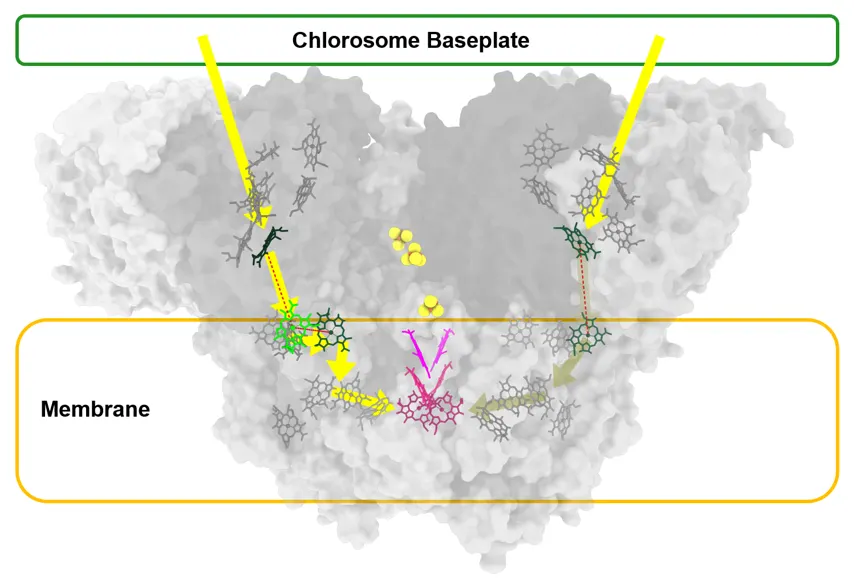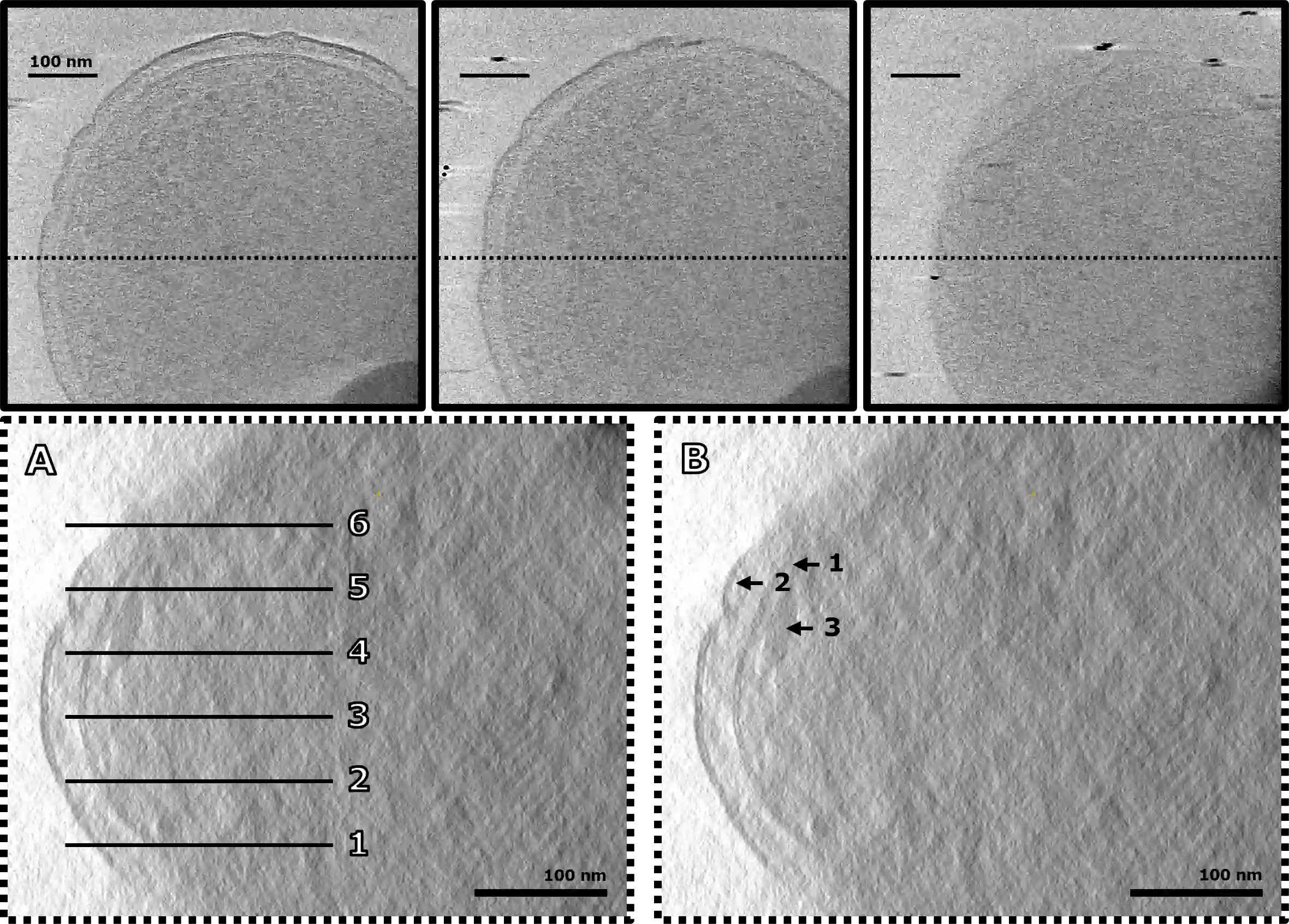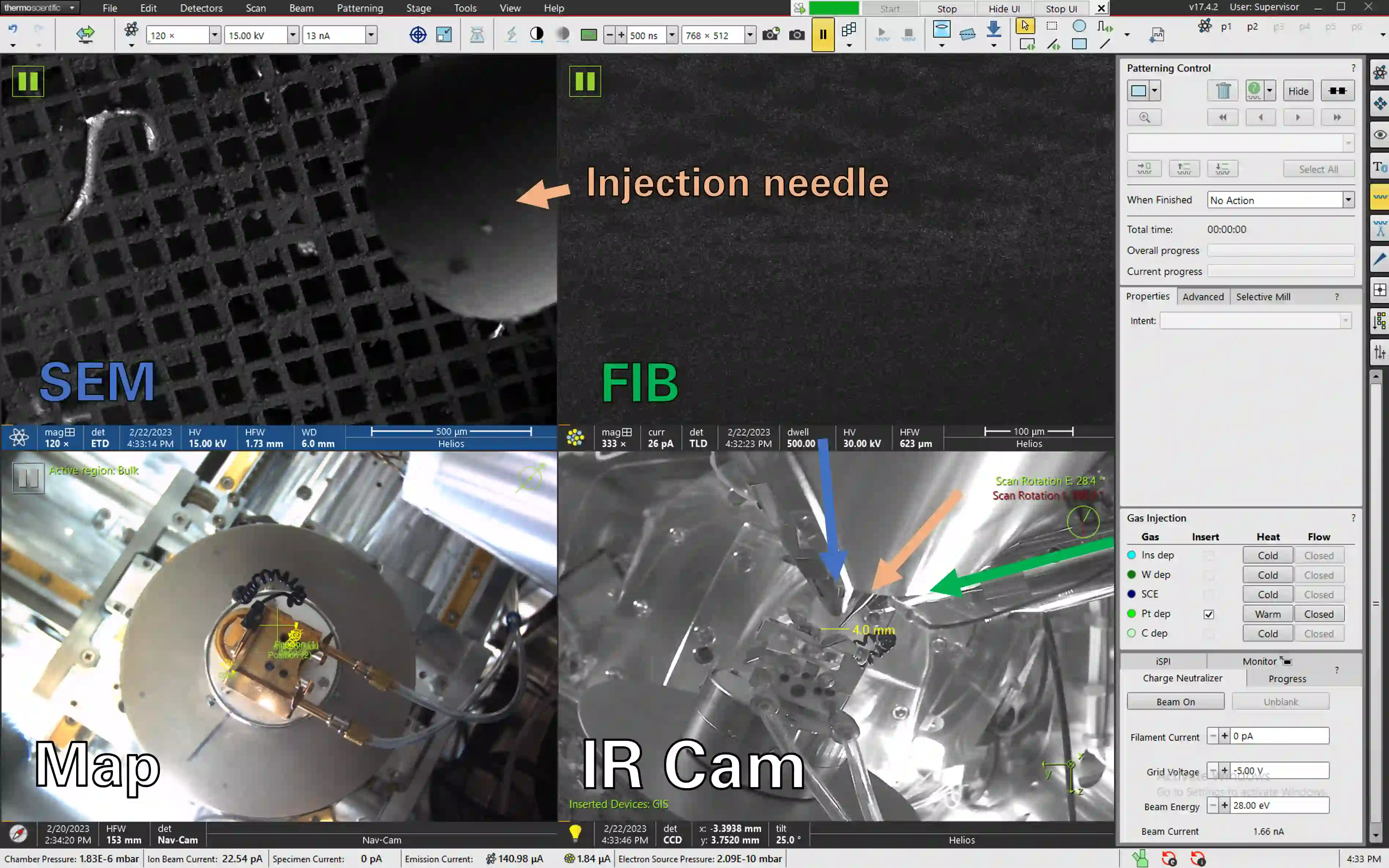MOLECULAR ASYMMETRY IN A PHOTOSYNTHETIC SUPERCOMPLEX
Chiu lab, Center for Applied Structural Discovery, ASU
Green sulfur bacteria (GSB) are a phylum of anaerobic photosynthetic bacteria found in some of the most extreme environments on earth. Chlorobaculum tepidum, found in New Zealand hot springs, is a commonly cultured model GSB. Using protein purification, single-particle cryo-EM, and mass spectrometry, we determined the structure of the photosynthetic reaction center and accessory FMO proteins. We found multiple asymmetric structures throughout the otherwise homodimeric RC including new membrane subunits, FMO orientation to the RC core, and a single BChl molecule in the RC that may bias energy transfer in the two branches of the homodimer.
WHOLE-CELL CRYO-ET
Chiu lab, Center for Applied Structural Discovery, ASU
Whole-cell cryogenic electron tomography (cryo-ET) is an emerging field of structural biology that has the potential to offer high-resolution structural information in situ without the need for extensive isolation or purification. We collected hundreds of tilt series of intact Chlorobaculum tepidum cells using a range of sample preparation techniques to establish standard operating procedures for the collection of optimized whole-cell tomograms.
CRYO-FIB MILLING
Chiu lab, Center for Applied Structural Discovery, ASU
Center for Integrated Nanotechnologies, Sandia National Labs
FIB milling involves the use of a dual-beam SEM/FIB microscope to precisely mill cuts and features into solid samples with a beam of focused ions. We explored the application of FIB for biological samples at cryogenic temperatures by milling lamellae into whole GSB cells vitrified on standard carbon-coated copper grids.


